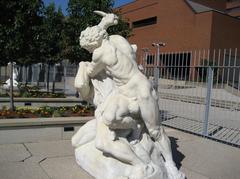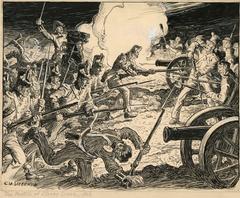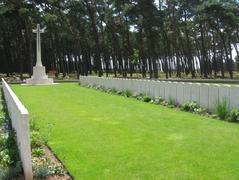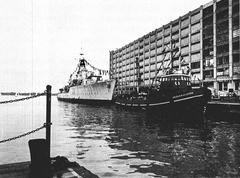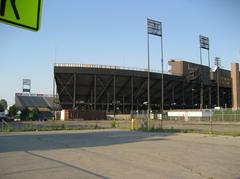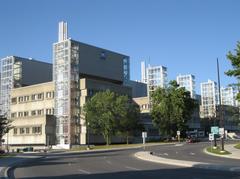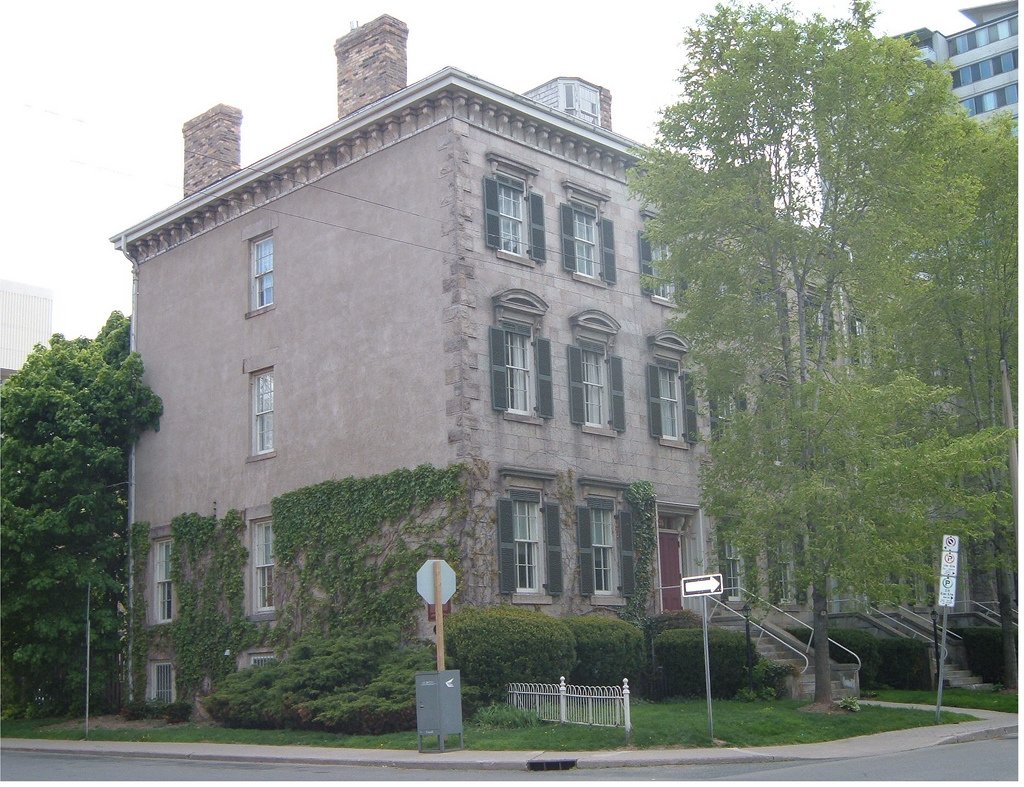
Sandyford Place Hamilton: Visiting Hours, Tickets, and Historical Sites Guide
Date: 14/06/2025
Introduction
Sandyford Place stands as a significant emblem of Hamilton, Ontario’s Victorian heritage, exemplifying 19th-century urban development and architectural ambition. Erected in the 1850s, this distinguished row of limestone townhouses is a testament to the city’s mercantile prosperity during its industrial rise. Designed by prominent architects William Thomas and Donald Nicholson, Sandyford Place provides a rare glimpse into the lives and aspirations of Hamilton’s elite during a transformative era. While the interiors are privately owned and generally inaccessible, the building’s striking façade on Duke Street remains a cherished landmark within the historic Durand neighbourhood. This guide offers a comprehensive look at Sandyford Place’s history, architectural features, preservation efforts, and essential visitor information—ensuring an informed and memorable visit to this National Historic Site.
Contents
- Introduction
- Historical and Architectural Context
- Urban Setting and Evolution
- Architectural Features and Heritage Status
- Cultural and Community Significance
- Visiting Sandyford Place: Hours, Tickets, and Tours
- Practical Tips for Visitors
- Conservation and Adaptive Reuse
- Visitor Experience and Nearby Attractions
- Frequently Asked Questions (FAQ)
- Conclusion and Call to Action
- Sources and Further Reading
Historical and Architectural Context
Origins and Civic Ambition
Constructed between 1856 and 1859, Sandyford Place was commissioned by James Balfour, a notable merchant, and designed by architects William Thomas and Donald Nicholson. This period marked Hamilton’s rapid transformation, with the city’s population soaring amidst industrialization and the growth of the mercantile class. Sandyford Place was conceived to meet the demand for prestigious urban housing, reflecting Hamilton’s desire to rival other major Canadian cities in commerce and culture.
Urban Evolution
Positioned at 191–197 Duke Street in the Durand neighbourhood, Sandyford Place originally stood among spacious lots and tree-lined avenues, attracting the city’s industrialists, politicians, and professionals. Over time, the area saw increased densification and urban development, yet Sandyford Place retained its architectural integrity, serving as a visual anchor for the district’s heritage streetscape (Official Plan, City of Hamilton).
Architectural Features and Heritage Status
Architectural Highlights
Sandyford Place is renowned for its Renaissance Revival and Italianate styling:
- Symmetrical Limestone Façade: Four attached townhouses, three stories high, constructed from finely dressed local limestone.
- Ornate Detailing: Cornices, bracketed eaves, arched windows, and intricate ironwork reflect mid-19th-century Italianate influence.
- Distinctive Pavilion Plan: Features include rusticated quoins, tall chimneys, shallow-pitched roofs, and a Queen Anne-style bay window at the rear.
- Interior Elements: Originally boasted grand staircases, high ceilings, ornate plasterwork, and marble fireplaces—some details preserved in private units.
Heritage Designation
Sandyford Place’s architectural and historical significance has earned it multiple heritage designations:
- National Historic Site of Canada (1975): Recognized as an outstanding example of pre-Confederation row housing (Waymarking).
- Ontario Heritage Trust Conservation Easement (1979): Protects the limestone façade, mature trees, and rear gardens.
- Municipal Heritage Status: Designated under Part IV of the Ontario Heritage Act (By-law 75-237).
These protections ensure the building’s preservation and continued prominence in Hamilton’s urban landscape.
Cultural and Community Significance
Sandyford Place has played a pivotal role in shaping the Durand neighbourhood’s identity and Hamilton’s broader sense of place:
- Symbol of Prosperity: Originally housing Hamilton’s elite, Sandyford Place embodied 19th-century aspirations and social prestige.
- Community Landmark: Its enduring presence anchors heritage tours and local festivals, fostering civic pride.
- Artistic Inspiration: The building’s elegant lines and rich history have inspired artists, writers, and photographers, contributing to Hamilton’s creative scene (Tourism Hamilton).
Visiting Sandyford Place: Hours, Tickets, and Tours
Public Access
- Exterior Viewing: The building is privately owned; interiors are not open to the public except during occasional special events (e.g., Doors Open Hamilton).
- No Regular Visiting Hours or Ticketing: Visitors are welcome to enjoy the façade and landscaped setting from Duke Street at any time.
- Special Events: Rare interior access may be available during heritage festivals or guided walking tours. Check the City of Hamilton Events Calendar and Tourism Hamilton for updates.
Accessibility and Getting There
- Public Transit: Easily accessible by bus routes servicing downtown Hamilton.
- Parking: Street parking is available nearby, though it may be limited during peak times.
- Pedestrian-Friendly: The Durand neighbourhood is ideal for walking explorations.
Practical Tips for Visitors
- Best Time to Visit: Spring through fall is ideal for walking tours and photography.
- Photography: The limestone façade is particularly photogenic; daytime is best for natural lighting.
- Respect Privacy: Observe property boundaries and posted signage.
- Combine with Other Sites: Nearby attractions include Whitehern Historic House and Garden Museum, the Art Gallery of Hamilton, and James Street North’s vibrant arts district (Chamber of Commerce).
Conservation and Adaptive Reuse
Restoration and Preservation
Sandyford Place’s survival is an exemplary case of heritage conservation:
- Restoration Efforts: In the late 1970s, advocacy by the Heritage Hamilton Foundation prevented demolition, leading to careful restoration and conversion into private condominiums (Heritage Hamilton Foundation).
- Adaptive Reuse: The building’s transformation respects original architecture while providing modern residential amenities, illustrating sustainable urban development (Ontario Heritage Trust).
- Landscape Preservation: Mature trees and gardens enhance the site’s streetscape appeal.
Visitor Experience and Nearby Attractions
Exploring Sandyford Place
- Walking Tours: Many Hamilton heritage walks include Sandyford Place as a highlight. Local tour providers may offer themed experiences focusing on Victorian architecture and urban history.
- Events and Festivals: The area hosts annual cultural events like the Barton Village Festival and art crawls, enriching the visitor experience (TodoCanada).
Nearby Cultural Sites
- Art Gallery of Hamilton: Renowned for Canadian and international collections.
- Hamilton Farmers’ Market: A lively historic marketplace.
- Whitehern Historic House: Offers insight into 19th-century family life in Hamilton.
Frequently Asked Questions (FAQ)
Q: Can I tour the interior of Sandyford Place?
A: No, the interiors are privately owned and not open to the public except during special events such as Doors Open Hamilton.
Q: Are there regular visiting hours or tickets?
A: No, there are no official visiting hours or ticketing required to view the exterior.
Q: How do I get there and is it accessible?
A: The site is accessible by public transit and offers pedestrian-friendly access. Street parking is available. Sidewalks are generally accessible for those with mobility challenges.
Q: What else can I visit nearby?
A: Explore Whitehern Historic House, the Art Gallery of Hamilton, or stroll James Street North for arts and dining.
Q: Are guided tours available?
A: Yes, some local heritage tours include Sandyford Place. Check with tour operators and the City of Hamilton’s events calendar.
Visuals and Media Recommendations
Enhance your visit by seeking out online galleries and virtual tours. Use images with descriptive alt tags such as “Sandyford Place Hamilton historical limestone townhouses” to increase accessibility and engagement.
Local Insights and Safety
Enjoy nearby independent cafés and shops, and engage with locals for tips. Hamilton’s downtown is generally safe, but as with any urban environment, it’s wise to remain aware of your surroundings, especially after dark. Respect private property and heritage guidelines when photographing or exploring.
Travel Logistics
- Currency: Canadian dollar (CAD); cash is handy for markets.
- Language: English predominates, with French and other languages present.
- Weather: June temperatures range from 18°C to 25°C (64°F to 77°F).
- Entry Requirements: International visitors may require an eTA or visa (Penguin and Pia).
Conclusion and Call to Action
Sandyford Place is a cornerstone of Hamilton’s architectural and cultural history. Its preservation and adaptive reuse demonstrate the city’s commitment to heritage conservation, while its elegant façade and central location invite exploration and appreciation. To make the most of your visit:
- Stroll the Durand neighbourhood and photograph the building’s unique details.
- Attend local festivals or join a guided heritage tour for deeper context.
- Explore nearby museums and cultural sites to enrich your understanding of Hamilton’s past.
- Download the Audiala app for curated audio tours and updates.
- Stay connected through social media and local tourism sites for the latest events and visitor tips.
By embracing all that Hamilton’s historical sites have to offer, you’ll enjoy an educational and memorable experience at Sandyford Place and beyond.
Sources and Further Reading
- City of Hamilton Events Calendar
- Tourism Hamilton
- Heritage Hamilton Foundation
- Chamber of Commerce: Sandyford Place
- Ontario Heritage Trust
- Waymarking - Sandyford Place
- TodoCanada: Things to do in Hamilton
- Penguin and Pia: Travelling to Canada for the First Time

